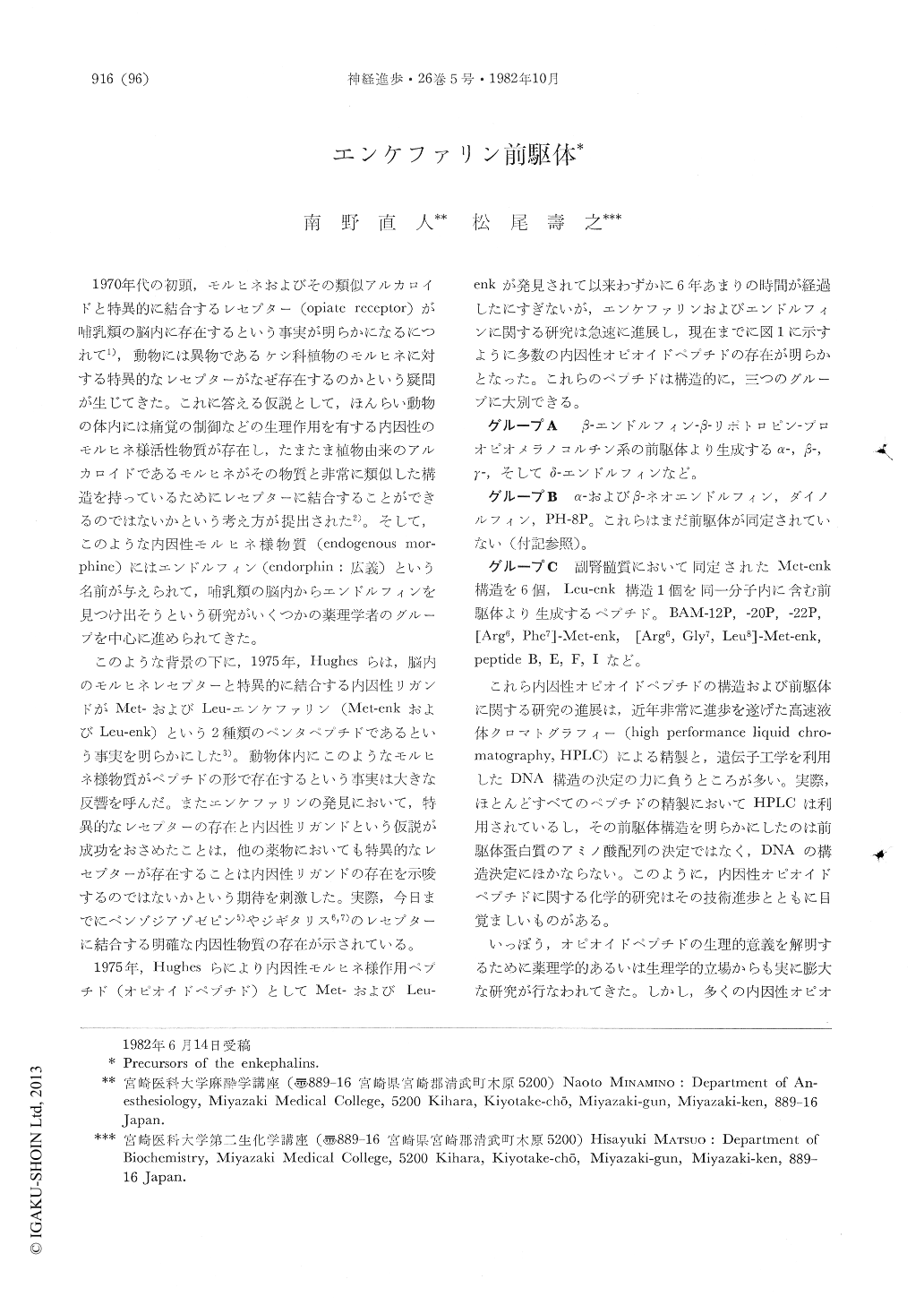Japanese
English
- 有料閲覧
- Abstract 文献概要
- 1ページ目 Look Inside
1970年代の初頭,モルヒネおよびその類似アルカロイドと特異的に結合するレセプター(opiate receptor)が哺乳類の脳内に存在するという事実が明らかになるにつれて1),動物には異物であるケシ科植物のモルヒネに対する特異的なレセプターがなぜ存在するのかという疑問が生じてきた。これに答える仮説として,ほんらい動物の体内には痛覚の制御などの生理作用を有する内因性のモルヒネ様活性物質が存在し,たまたま植物由来のアルカロイドであるモルヒネがその物質と非常に類似した構造を持っているためにレセプターに結合することができるのではないかという考え方が提出された2)。そして,このような内因性モルヒネ様物質(endogenous morphine)にはエンドルフィン(endorphin:広義)という名前が与えられて,哺乳類の脳内からエンドルフィンを見つけ出そうという研究がいくつかの薬理学者のグループを中心に進められてきた。
このような背景の下に,1975年,Hughesらは,脳内のモルヒネレセプターと特異的に結合する内因性リガンドがMet-およびLeu-エンケファリン(Met-enkおよびLeu-enk)という2種類のペンタペプチドであるという事実を明らかにした3)。動物体内にこのようなモルヒネ様物質がペプチドの形で存在するという事実は大きな反響を呼んだ。
Since the discovery of Met- and Leu-enkephalin as the first endogenous ligands for opiate receptor in 1975, more than 20 endogenous opioid peptides have been identified in brain and other tissues. Recently, chemical information of endogenous opioid peptides and their precursors have been accumulated and they have been proposed to be candidates for a neurotransmitter or a neuromodulator. Physiological functions of these peptides, however, remain to be solved.
At the present stage, endogenous opioid peptides are classified into three groups, as follows;

Copyright © 1982, Igaku-Shoin Ltd. All rights reserved.


